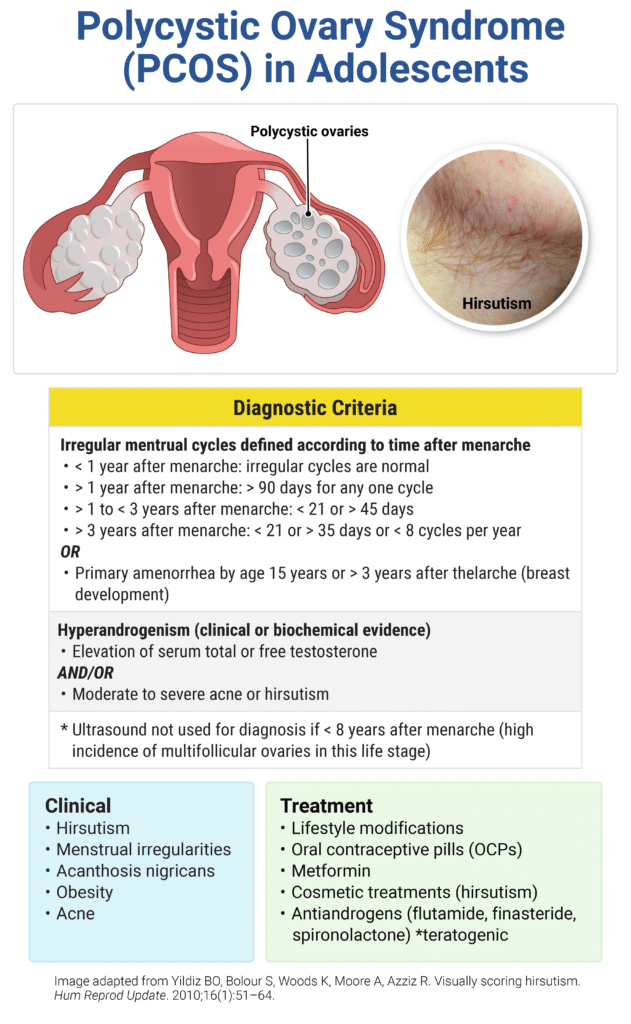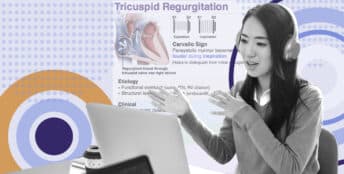Rapid Review: Polycystic Ovarian Syndrome

Reviewed February 2024

Polycystic Ovary Syndrome (PCOS)
- Ovulatory dysfunction, hyperandrogenism, and polycystic ovaries
- Common PE findings: bilateral ovarian enlargement, acanthosis nigricans, high BMI
- Laboratory evaluation:
- Oligomenorrhea: hCG, FSH, TSH, prolactin
- Hyperandrogenism: total testosterone and sex hormone-binding globulin or bioavailable and free testosterone, morning 17-hydroxyprogesterone
- Metabolic disease screening: 2-hour oral glucose tolerance test, fasting lipid panel
- Commonly associated with insulin resistance, which may be the central etiology
- Treatment is combination low-dose oral contraceptive pills, lifestyle changes, metformin
- Most common cause of infertility and warrants ovulation induction:
- Clomiphene citrate traditionally first-line, FDA-approved
- Letrozole increasingly preferred therapy (off-label)
Sample question:
A 28-year-old woman presents to the physician because she and her partner have been trying to conceive for the past year without success. She reports irregular menstrual periods, with cycles ranging from 20 to 50 days apart. Physical examination reveals acne and hirsutism. Her body mass index is 32 kg/m2. Laboratory studies show an increased luteinizing hormone to follicle-stimulating hormone ratio. Which of the following best describes the underlying pathophysiology of this patient’s condition?





Comments (0)